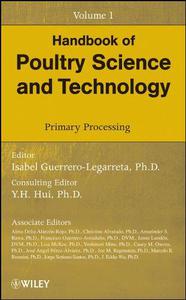 Handbook of Poultry Science and Technology, Volume 1 By
Handbook of Poultry Science and Technology, Volume 1 By2010 | 773 Pages | ISBN: 047018552X | PDF | 9 MB
A comprehensive reference for the poultry industry-Volume 1 describes everything from husbandry up to preservation With an unparalleled level of coverage, the Handbook of Poultry Science and Technology provides an up-to-date and comprehensive reference on poultry processing. Volume 1 describes husbandry, slaughter, preservation, and safety. It presents all the details professionals need to know beginning with live poultry through to the freezing of whole poultry and predetermined cut parts. Throughout, the coverage focuses on one paramount objective: an acceptable quality and a safe product for consumer purchase and use. The text includes safety requirements and regulatory enforcement in the United States, EU, and Asia. Volume 1: Primary Processing is divided into seven parts: Poultry: biology to pre-mortem status-includes such topics as classification and biology, competitive exclusion, transportation to the slaughterhouse, and more Slaughtering and cutting-includes the slaughterhouse building and required facilities, equipment, and operations; carcass evaluation and cutting; kosher and halal slaughter; and more Preservation: refrigeration and freezing-includes the biology and physicochemistry of poultry meat in rigor mortis under ambient temperature, as well as changes that occur during freezing and thawing; engineering principles; equipment and processes; quality; refrigeration and freezing for various facilities; and more Preservation: heating, drying, chemicals, and irradiationComposition, chemistry, and sensory attributes-includes quality characteristics, microbiology, nutritional components, chemical composition, and texture of raw poultry meat Eggs-includes egg attributes, science, and technology Sanitation and Safety-includes PSE, poultry-related foodborne diseases, OSHA requirements, HACCP and its application, and more Content: Chapter 1 Poultry Biology, Classification, and Trade Descriptions (pages 1-18): Y. H. Hui and Isabel Guerrero?LegarretaChapter 2 Competitive Exclusion Treatment in Poultry Management (pages 19-44): Carita Schneitz and Geoffrey MeadChapter 3 Premortem Handling (pages 45-53): Lorenzo Antonio Duraan?MeleendezChapter 4 Transportation to the Slaughterhouse (pages 55-67): Daniel Mota Rojas, Miguel Gonzalez Lozano and Isabel Guerrero?LegarretaChapter 5 Slaughterhouse Building and Facility Requirements (pages 69-78): Daniel Mota Rojas, Miguel Gonzalez Lozano and Isabel Guerrero?LegarretaChapter 6 Slaughtering Equipment and Operations (pages 79-100): Juana Fernandez?Lopez, Esther Sendra?Nadal and Estrella Sayas?BarberaChapter 7 Poultry Carcass Evaluation and Cutting (pages 101-106): Lorenzo Antonio Duran?MelendezChapter 8 Official Control of Slaughterhouses and Processing Plants (pages 107-119): Nina Kaario and Janne LundenChapter 9 Poultry Packaging (pages 121-129): Alfonso Totosaus?SanchezChapter 10 Kosher Laws in Food Processing (pages 131-181): Joe M. Regenstein and Carrie E. RegensteinChapter 11 Food Production from the Halal Perspective (pages 183-215): Yaakob B. Che Man and Awis Qurni SaziliChapter 12 Biochemical Changes during Onset and Resolution of Rigor Mortis under Ambient Temperature (pages 217-241): Estrella Sayas?Barbera, Juana Fernandez?Lopez and Esther Sendra?NadalChapter 13 Physicochemical Changes during Freezing and Thawing of Poultry Meat (pages 243-261): Alma Delia Alarcon?Rojo and Hector Janacua?VidalesChapter 14 Low?Temperature Storage of Poultry (pages 263-281): Maria Elena Carranco?Jauregui, Silvia Carrillo?Dominguez and Maria De La Concepcion CalvoChapter 15 Engineering Principles of Freezing (pages 283-292): Liliana Alamilla?Beltran, Jose Jorge Chanona?Perez, Jose Fernando Gonzalez?Sanchez and Gustavo F. Gutierrez?LopezChapter 16 Quality of Frozen Poultry (pages 293-306): Esther Sendra?Nadal, Estrella Sayas?Barbera and Juana Fernandez?LopezChapter 17 Quality of Refrigerated Poultry (pages 307-324): Vandana Sohlia and Amarinder S. BawaChapter 18 Refrigeration Equipment and Operations (pages 325-347): Mallika Manral and Amarinder S. BawaChapter 19 Freezing Equipment and Operations (pages 349-375): Martha Yarely Leal RamosChapter 20 Refrigeration and Freezing in Central Facilities and Retail Stores (pages 377-395): K. Radakrishna, Vandana Sohlia and Amarinder S. BawaChapter 21 Refrigeration and Freezing in Industrial Food Facilities (Hospitals, Restaurants, Factories) (pages 397-418): Vandana Sohlia and Amarinder S. BawaChapter 22 Heating, Drying, and Chemicals (pages 419-430): Jose Arturo Garcia?MaciasChapter 23 Irradiation (pages 431-449): Maria Pilar Gonzalez?Santiago, Beatriz Caballero?Santos, Magdalena Tudela?Carrasco and Jose Maria Fernandez?GinesChapter 24 Quality Characteristics of Poultry Products (pages 451-465): Sarah PadillaChapter 25 Chemical Composition and Nutritional Content of Raw Poultry Meat (pages 467-489): Jorge Soriano?SantosChapter 26 Poultry Meat Tenderness (pages 491-514): Casey M. Owens and Jean?Francois C. MeullenetChapter 27 Pale, Soft, and Exudative Poultry Meat (pages 515-531): Casey M. Owens and Jason K. AppleChapter 28 Nutritional and Health Attributes of Eggs (pages 533-578): Yuan Ren, Jianping Wu and Robert RenemaChapter 29 Functional Properties of Egg Components in Food Systems (pages 579-630): Yoshinori Mine and Marie YangChapter 30 Chemical Residues: Pesticides and Drugs (??Agonists and Antibiotics) (pages 631-641): Maria de Lourdes Perez?ChabelaChapter 31 Factors Affecting Microbial Growth in Fresh Poultry (pages 643-654): Carol W. TurnerChapter 32 Basic Principles of the HACCP System in the Poultry Industry (pages 655-665): Chitra WendakoonChapter 33 HACCP in Poultry Slaughterhouses (pages 667-682): Marjatta RahkioChapter 34 Online Inspection (pages 683-701): Kevin ChaoChapter 35 Poultry?Related Foodborne Disease (pages 703-716): Lisa McKeeChapter 36 Poultry?Related Foodborne Diseases in Central and South America (pages 717-735): Gabriel J. Sequeira, Luis E. Marti and Marcelo R. RosminiChapter 37 Overview of Poultry Processing and Workers' Safety (pages 737-751): Y. H. Hui and Isabel Guerrero?LegarretaChapter 38 Poultry?Processing Industry and eTool (pages 753-772): Y. H. Hui and Isabel Guerrero?Legarreta
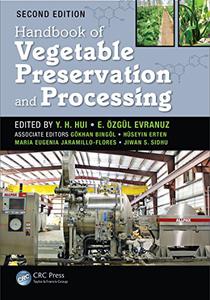


![S.T.A.L.K.E.R. 2 / STALKER 2: Heart of Chornobyl - Ultimate Edition (2024) [+UPDATE 23.12.2024 - v1.1.3] ElAmigos / Polska wersja językowa](https://i.postimg.cc/Zqd8RWGY/UZG8PBE.jpg)




































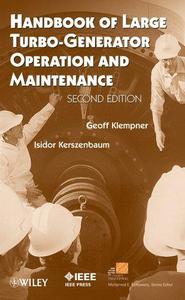
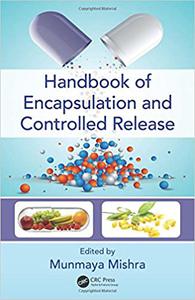
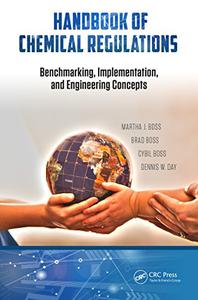
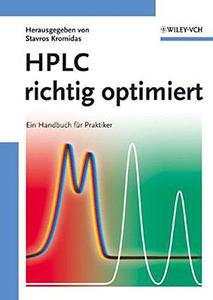
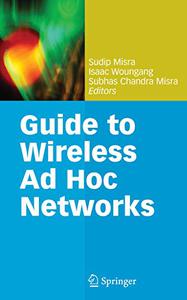
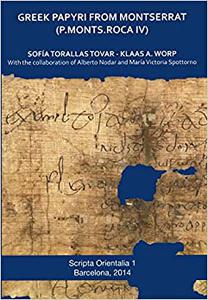
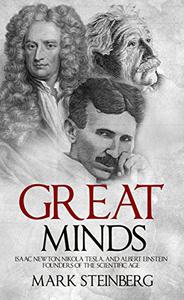








![David Gilmour - Luck and Strange (2024) [FLAC]](https://i.imgur.com/everaBc.jpeg)
![Męskie Granie Orkiestra - Męskie Granie 2024 (2024) [FLAC]](https://i.imgur.com/FAyOxrM.jpeg)
![The Rolling Stones - Hackney Diamonds (2023) [FLAC]](https://i.imgur.com/wCkyyUN.jpg)
![Lady Gaga - Harlequin (2024) [FLAC]](https://i.imgur.com/dcgIA8D.jpeg)
![Natalia Kukulska - Dobrostan (2024) [FLAC]](https://i.imgur.com/bdljG3O.jpeg)
![Kaśka Sochacka - Ta druga (2024) [FLAC]](https://i.imgur.com/hORQKvn.jpeg)
![Kuba Sienkiewicz - Pani Bóg (2024) [FLAC]](https://i.imgur.com/qijCx8Z.jpeg)
![Lanberry - Heca (2024) [FLAC]](https://i.imgur.com/8P7QfeR.jpeg)
![Sara James - PLAYHOUSE (2024) [FLAC]](https://i.imgur.com/m4f8OKg.jpeg)
![Grzegorz Hyży - EPILOG (2024) [FLAC]](https://i.imgur.com/8DA2sBr.jpeg)
![Myslovitz - WIECZORAMI CHŁOPCY WYCHODZĄ NA ULICE (2024) [FLAC]](https://i.imgur.com/l9mMtIG.jpeg)
![Krzysztof Zalewski - ZGŁOWY (2024) [FLAC]](https://i.imgur.com/vh48RAc.jpeg)
![Krzysztof Cugowski - Wiek to tylko liczba (2024) [FLAC]](https://i.imgur.com/SBzgqe2.jpeg)
![Nosowska - Kasia i Błażej (2024) [FLAC]](https://i.imgur.com/mObvVXQ.jpeg)
![sanah - Pianinkowe Kaprysy (2024) [FLAC]](https://i.imgur.com/pVjjPAa.jpeg)
![Kwiat Jabłoni - Pokaz slajdów (2023) [FLAC]](https://i.imgur.com/diERHfZ.jpg)
![Robert Cichy - Spacer po Warszawie (2024) [FLAC]](https://i.imgur.com/ixleU9o.jpeg)
![Viki Gabor - Terminal 3 (2024) [FLAC]](https://i.imgur.com/Q1KCnDs.jpeg)
![Sanah - Kaprysy (2024) [FLAC]](https://i.imgur.com/71OZm4h.jpeg)
![Męskie Granie Orkiestra - Męskie Granie 2023 (2023) [FLAC]](https://i.imgur.com/U4YHo8d.jpg)




